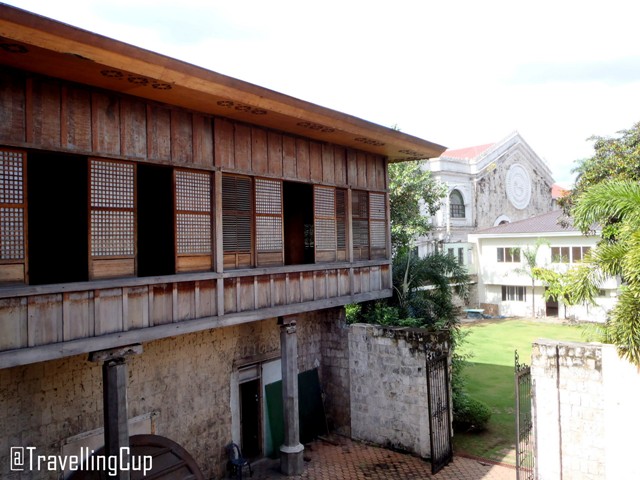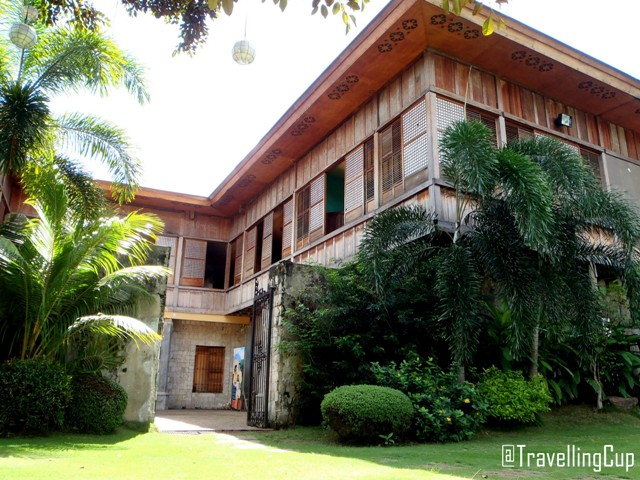This was my third destination in Going Back to the History of Cebu
Just beside the Rajah Humabon Monument, Cebu Metropolitan Cathedral and along the high way, I found an old house with capiz windows and wood as the walls. When I've checked my map, beside the monument is the Cebu Cathedral Museum, so no need to walk farther.
Just seven steps from the plaza (I counted it) is the entrance of the museum. It was so early, so the janitor was still cleaning the floor when I arrived at the lobby area. The caretaker and the guard were so kind to me. A beautiful and young woman at heart was sitting at the reception area that time, and she was giving me an instructions about the policies of the museum (like no picture taking on the second floor and chapel.) She was smiling the whole time while she was giving me the receipt and giving me some information about the museum. Entrance Fee: 50 Pesos
Right after processing my entrance fee, I followed what she instructed me. I stepped on the old wooden staircase that has no nails used during the construction. The stairs is going to the second floor that contains a lot of memorabilia and galleries from the past Bishops.
The first gallery contains photographs that is showing how the Catholic grew in Cebu. On the second gallery is the collection of memorabilia of His Eminence Ricardo J. Cardinal Vidal like religious books, the vestments worn during his Episcopal ordination, ring from his predecessor Julio Cardinal Rosales and some golden and silver coins ( I don't know what it symbolizes.) The fourth gallery contains different saints which are from different private individuals. The fifth has a collections of religious chalices, ciboriums, cruets, monstrances and vestments. There were still a lot of tiny pieces which I have no idea what are those.
Cebu Cathedral Museum is an ecclesiastical museum of the Archdiocese of Cebu. The building itself doesn't have any exact details during the constructions because the archdiocesan archives were burned along with the Cathedral and the Archbishop's Palace during the trial bombing of the U.S. forces in September 1944. But according to some historical people, it was built by Bishop Santos Gomez Marañon during mid-1800s. Bishop Marañon was known as a church builder. He designed the Metropolitan Cathedral and other religious structures in the province of Cebu.
The structure of the museum is an example of bahay-na-bato and was based on bahay kubo architecture. The materials like bamboo and sawali were perfectly created and decorated for the walls; hardwood trunks for the posts; Capiz shells for the wide windows.
The ambiance inside this heritage house was really good. I can feel how fortunate the Cebuanos are, in terms of their own history. But, I still need to proceed to my next destination, so time to say good bye to the people of the Museum. Next was Cebu Heritage Monument.




